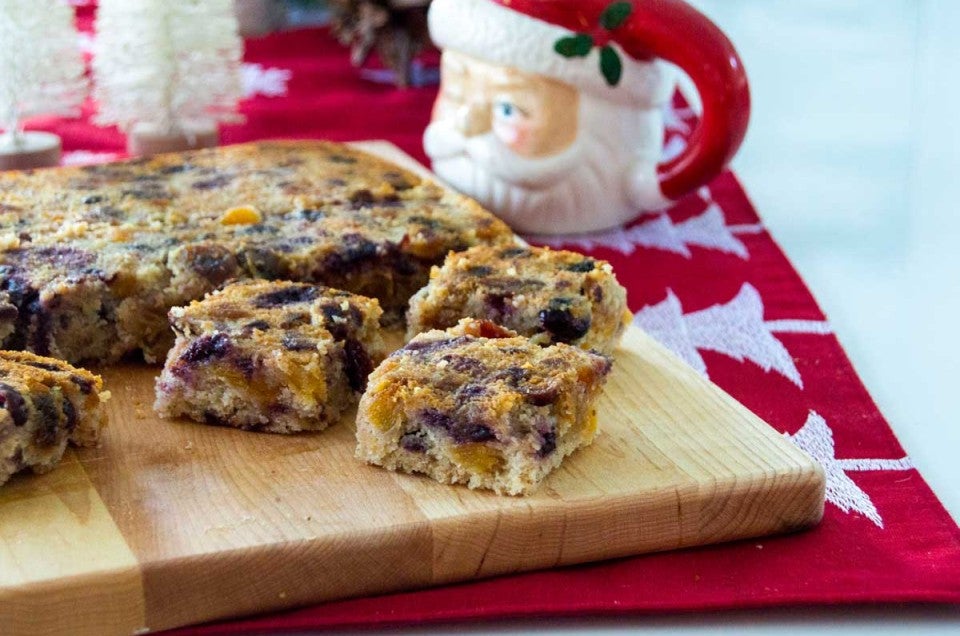


Sometimes, when December rolls around and I realize it’s time to make fruitcake, I wonder if I should even bother. My extended family includes two people who like fruitcake (both in their 70s) — and many, many others who grimace and politely decline when I offer to send them a mini loaf from my stash. “Fruitcake? No thanks” is about as polite as the responses get; most are along the lines of “Fruitcake? YUCK!”
But I go ahead and make my December fruitcake anyway — and then remember why I bother. Made with my favorite dried fruits and toasted nuts, gilded with vanilla syrup, it’s my once-a-year pure pleasure. And since fruitcake’s shelf life is basically forever, I’m able to nibble and nosh on my little loaves for weeks, right up until New Year’s — when I declare the season over and donate any remaining cake to the birds.
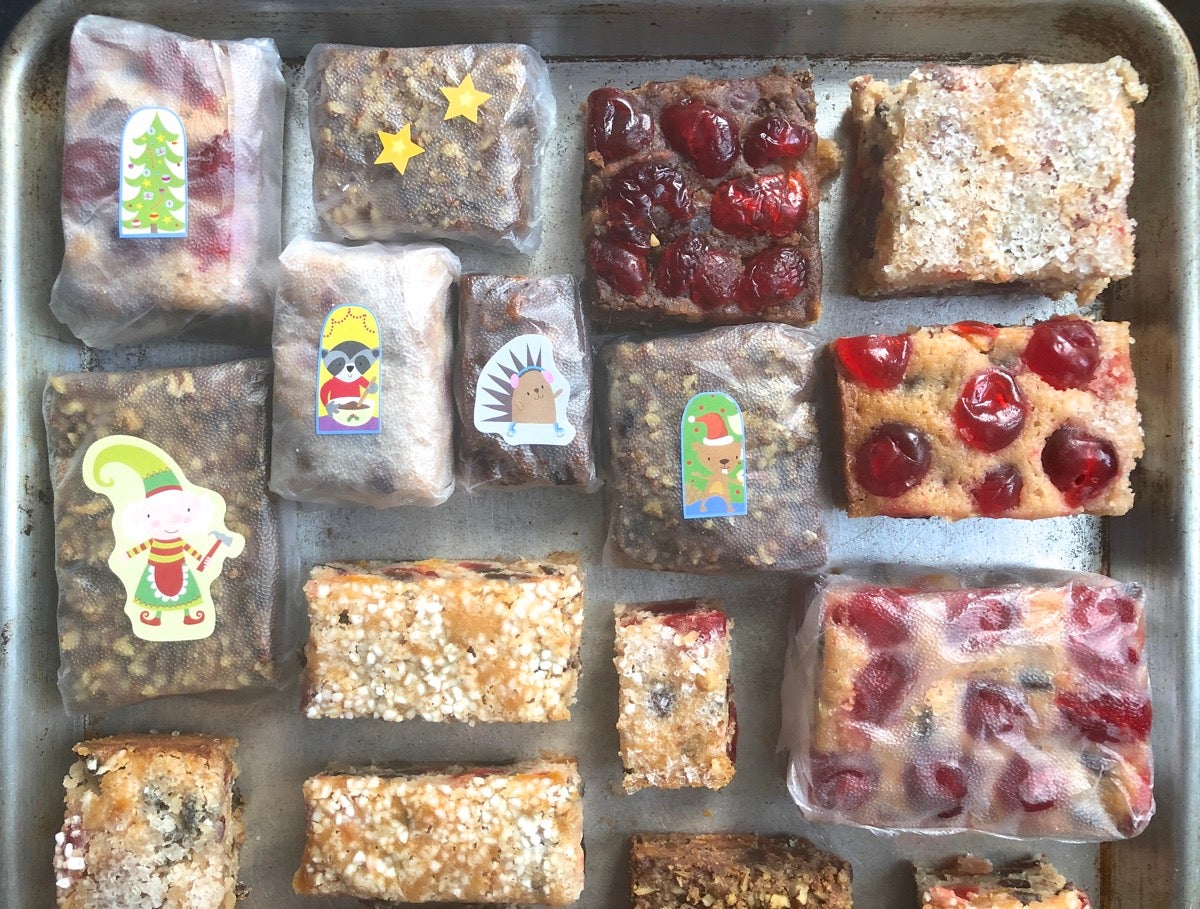
This year, with large gatherings out of the question, I’m planning to pack and ship goodies to friends and family with whom I’d normally spend the holidays in person. And guess what? Every one of them is getting a taste of fruitcake (SO easy to pack and ship) along with the candy and cookies.
That said, I’m going to be smart about it: I’m not making fruitcake per se. Instead, I’m trying my hand at “Golden Mandarin Apricot Squares” and “Deep-Dark Cranberry-Pecan-Cherry Bars” (otherwise known as Golden Fruitcake and Everyone’s Favorite Fruitcake, respectively — but don’t tell!).
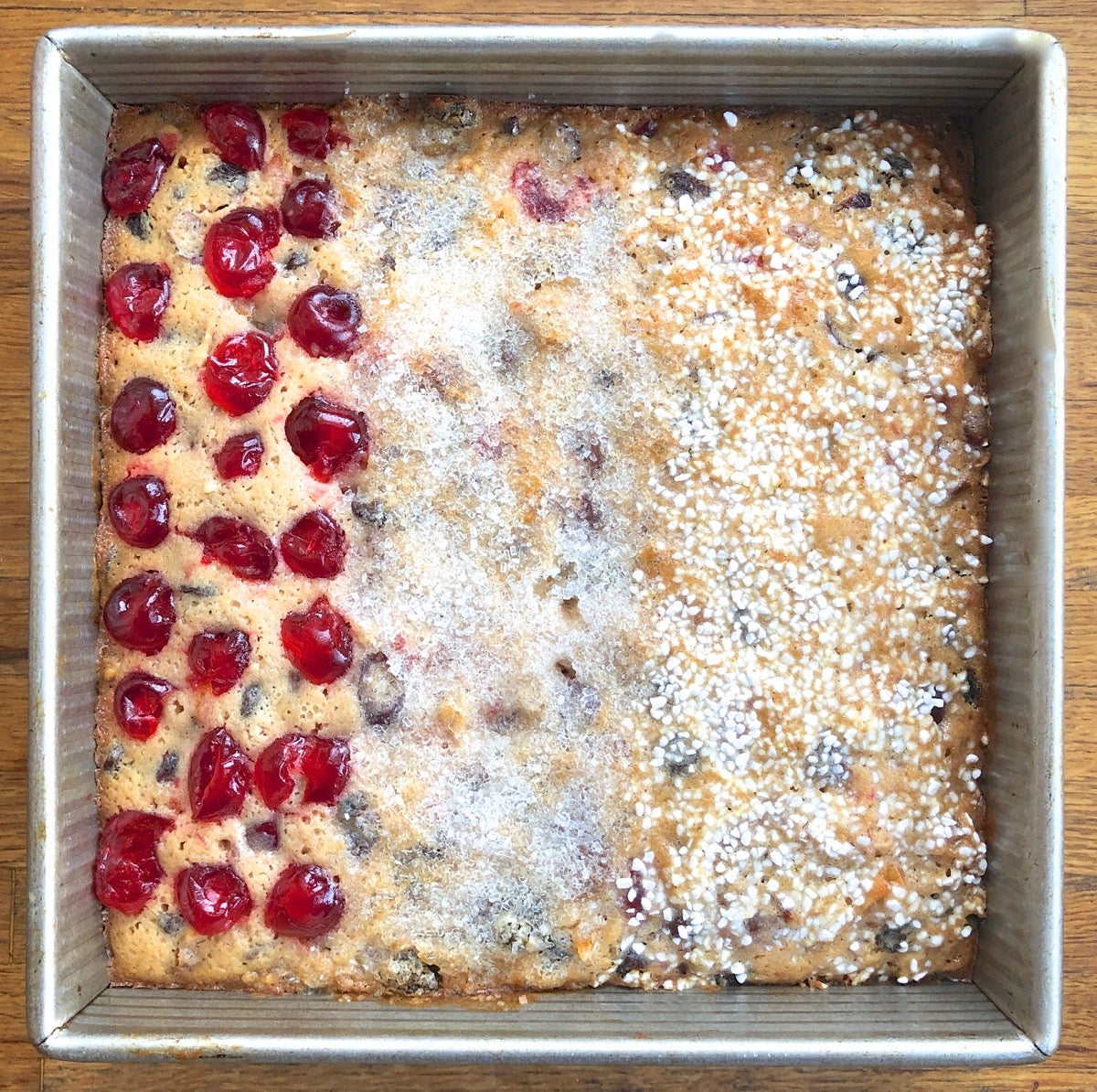
How will I pull off this cunning identity heist? By baking the cakes not in their usual loaf shape, but in a 9”x 13” (or 9” x 9”) pan, one typically used for brownies or sheet cake. Topped with diced pecans, candied cherries, or coarse decorating sugar, and cut in squares, they resemble nothing so much as a rich, gooey bar. A fruit blondie, if you will.
Now, if you don’t care for dried fruit at all, these bars won’t magically transform your palate. But if you like dried apricots, pineapple, cranberries and the like, drop your fruitcake prejudice and give these bars a try.
After all, if it isn’t called fruitcake and doesn’t look like fruitcake and tastes better than you’d ever imagined fruitcake could taste — well, perception is reality. Enjoy your fruit blondie!
You should be able to make bars out of any fruitcake recipe; it’s simply a matter of matching recipe to pans. Here’s how to choose a fruitcake recipe suitable for baking in bar form. In order to bake nicely in 9" x 13" or 9" x 9" pans, it should:
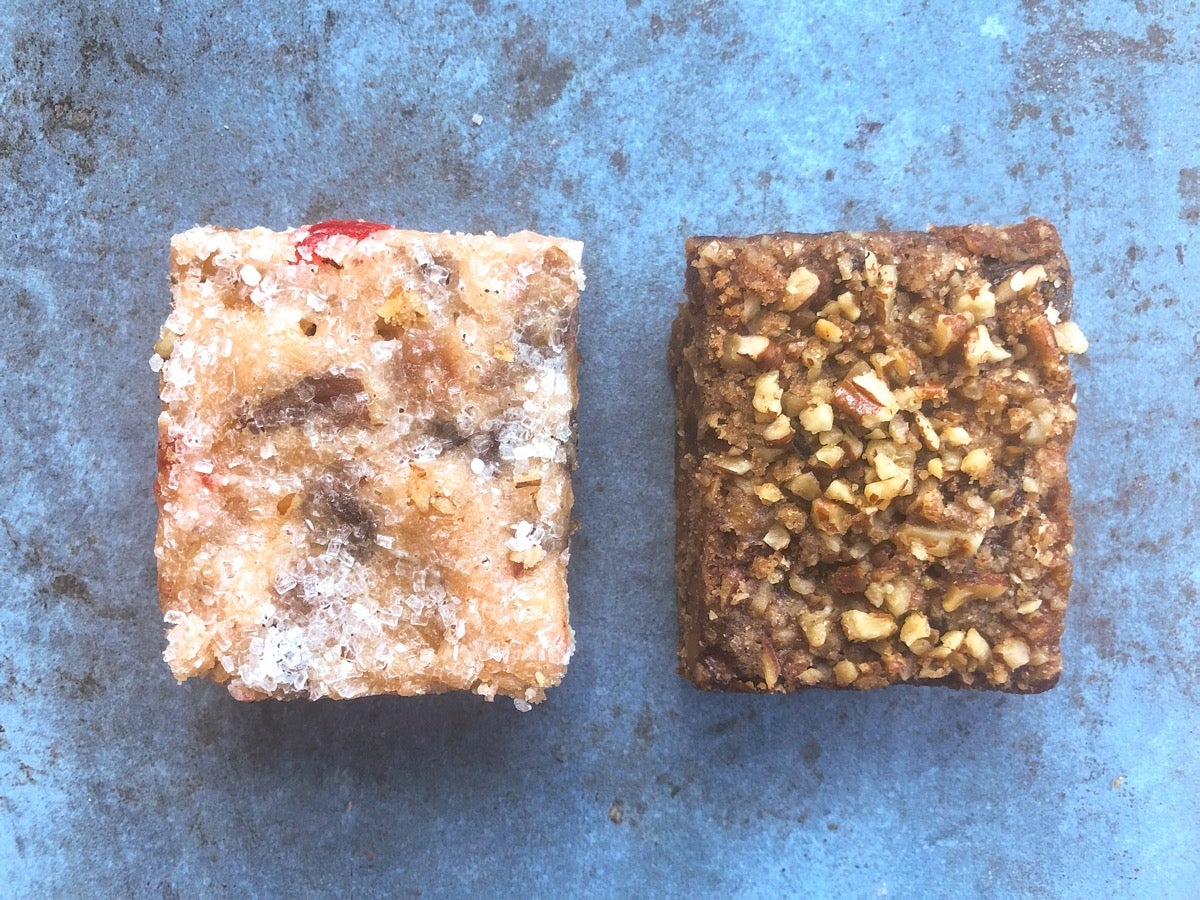
The two recipes I use most often are Everyone’s Favorite Fruitcake, a traditional dark, spicy fruitcake; and Golden Fruitcake, which makes a lighter-colored, milder-flavored cake.
A full recipe of either cake will fill either two 9” x 13” pans (for thinner bars, about 1”); or two 9” square pans (for thicker bars, about 1 1/2”).
Two whole pans is a lot of fruitcake. And since I don’t have a corresponding number of eager recipients, I usually make a half recipe of each: dark fruitcake for my older friends and relatives, light for those who might be, shall we say, less enthusiastic.
If your favorite recipe is written to yield a single standard loaf, then you don't even need to cut it back; just make as written and fill one pan.
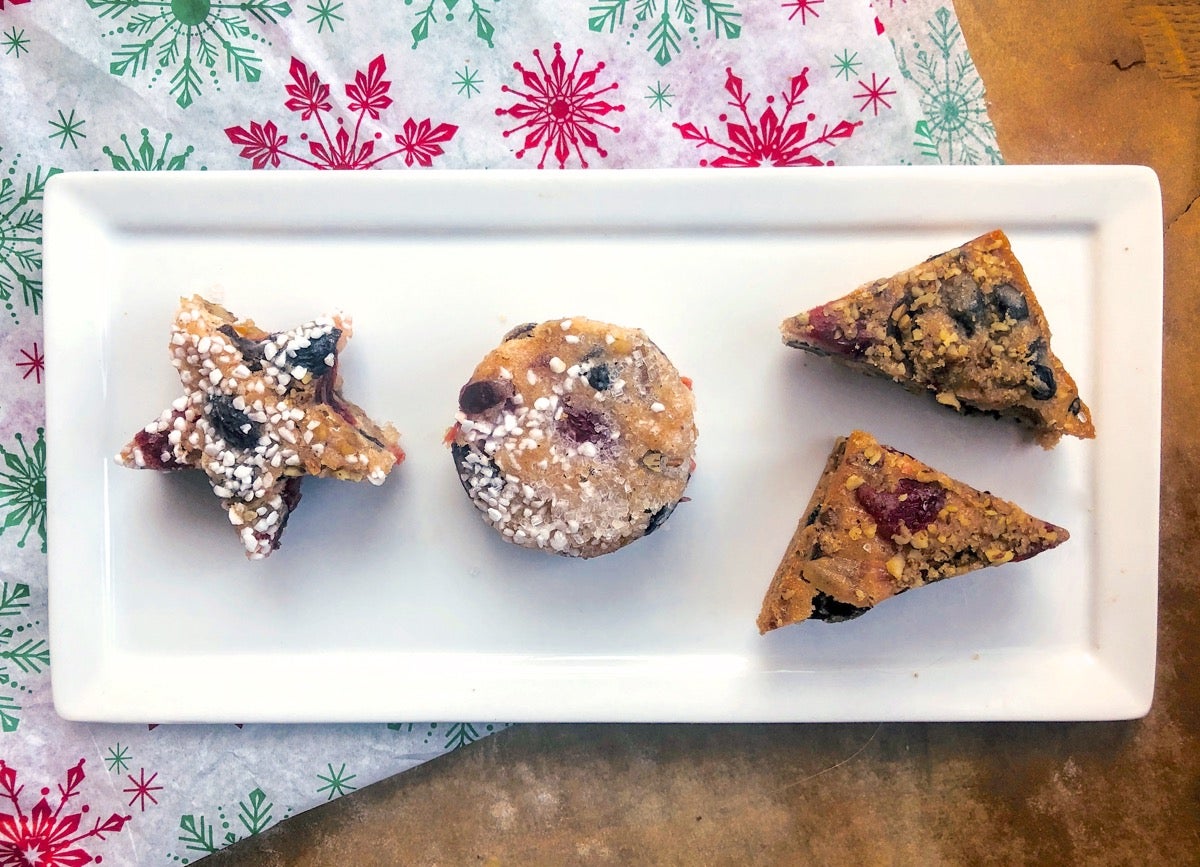
Choosing whether to make light or dark bars is straightforward, but how thick should you make them? Totally your call. The thinner bars are best cut in squares (or diamonds, stars, circles, or your own favorite shape); the thicker bars can be cut in small squares (cubes), or in 3” x 1 1/2” rectangles to mimic tiny little loaves, if that’s your preference.
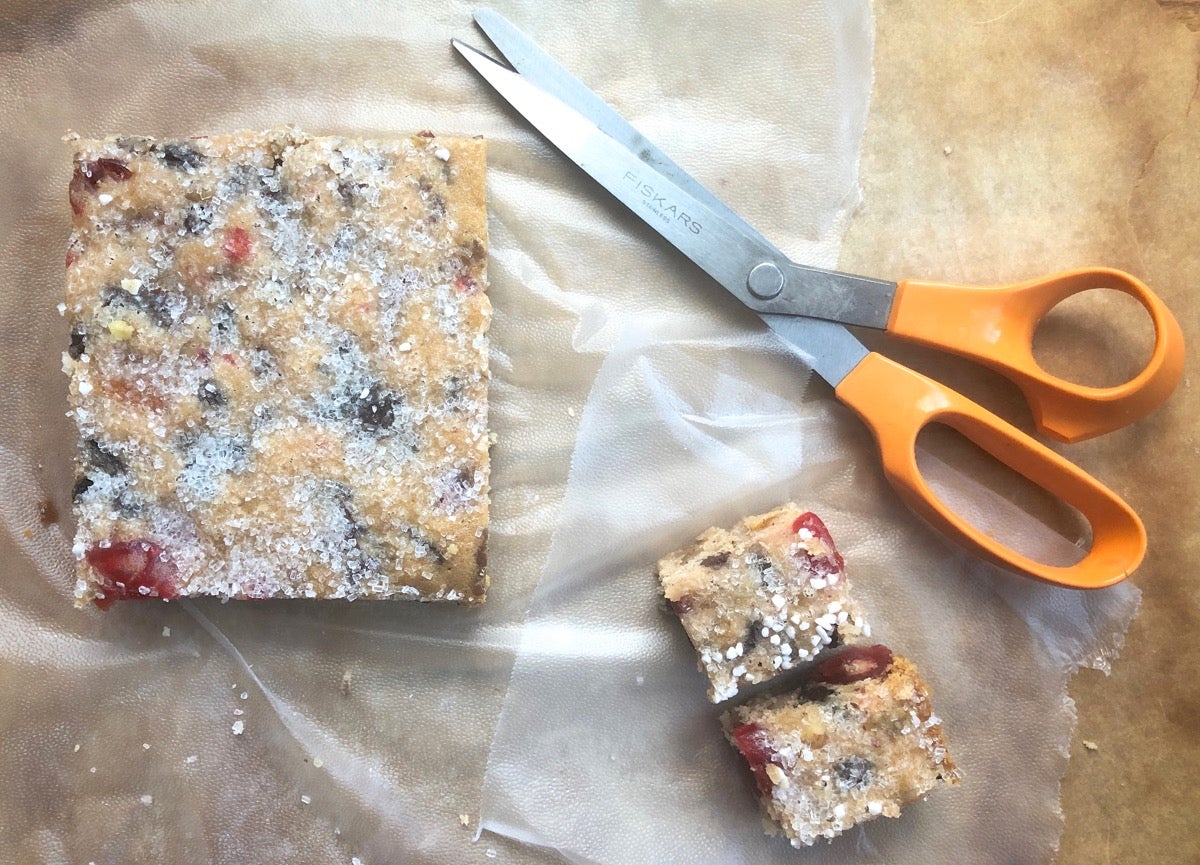
Another nice thing about bars: you can cut them any size you like. Your Aunt Carol loves fruitcake? Gift her with a major-sized slab. Your friend Emily not so much, but willing to try? Send her a couple of bite-sized portions. No longer are you relegated to one-size-fits-all fruitcake loaves, be those loaves maxi, mini, or in between.
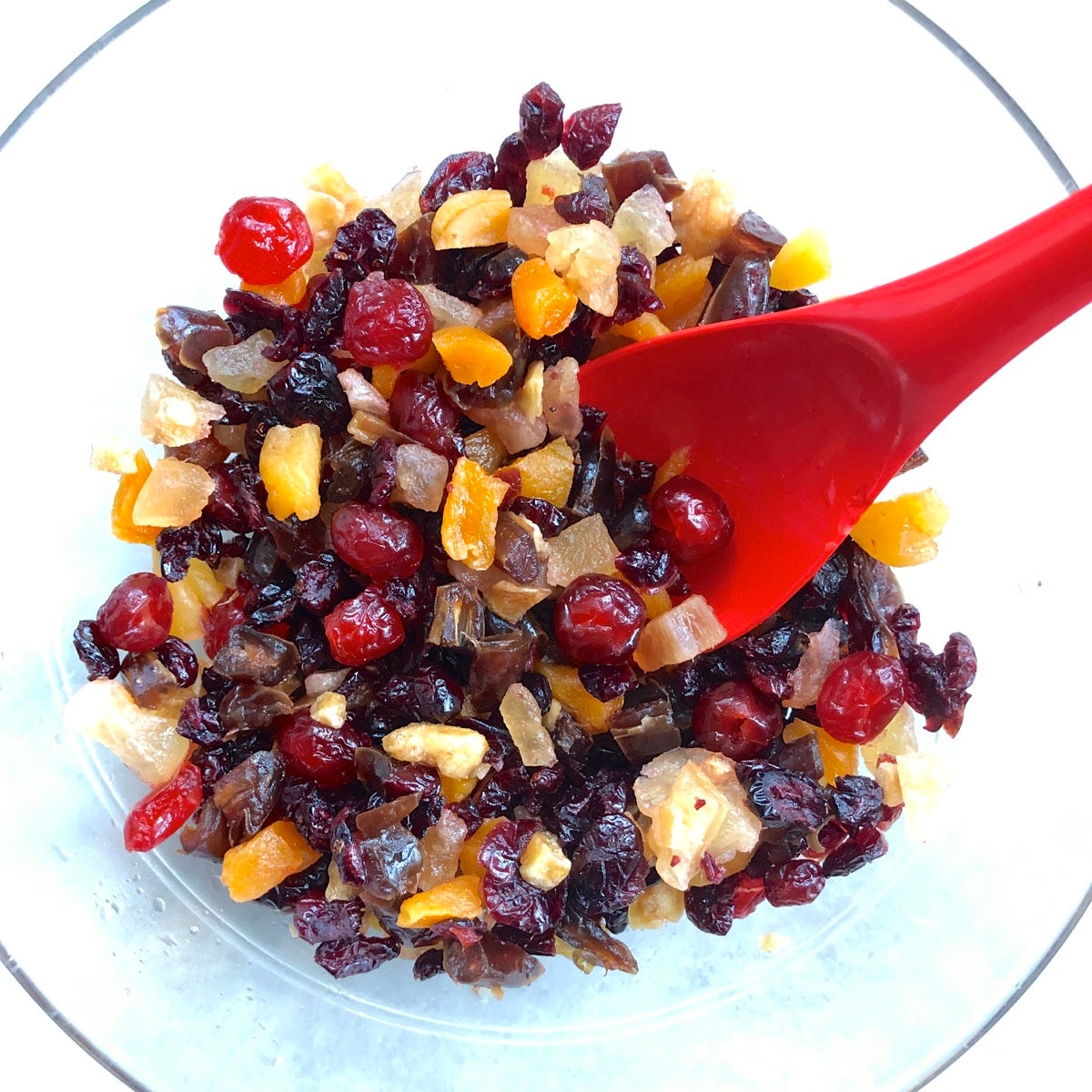
Your recipe calls for candied citron, and you don't care for it? Or you absolutely love dried papaya, but you've never found a fruitcake recipe that uses it? Dried fruits are completely interchangeable. Substitute dried cranberries for raisins or chopped pineapple for candied orange peel; it's totally up to you. (Though if you love candied citrus peel, go for it! But first check out our post on how to candy your own peel.)
And if you don't care for nuts (or are baking for someone who's avoiding them), substitute fruit for the called-for volume of nuts. Or simply leave them out; your bars may be just slightly thinner.
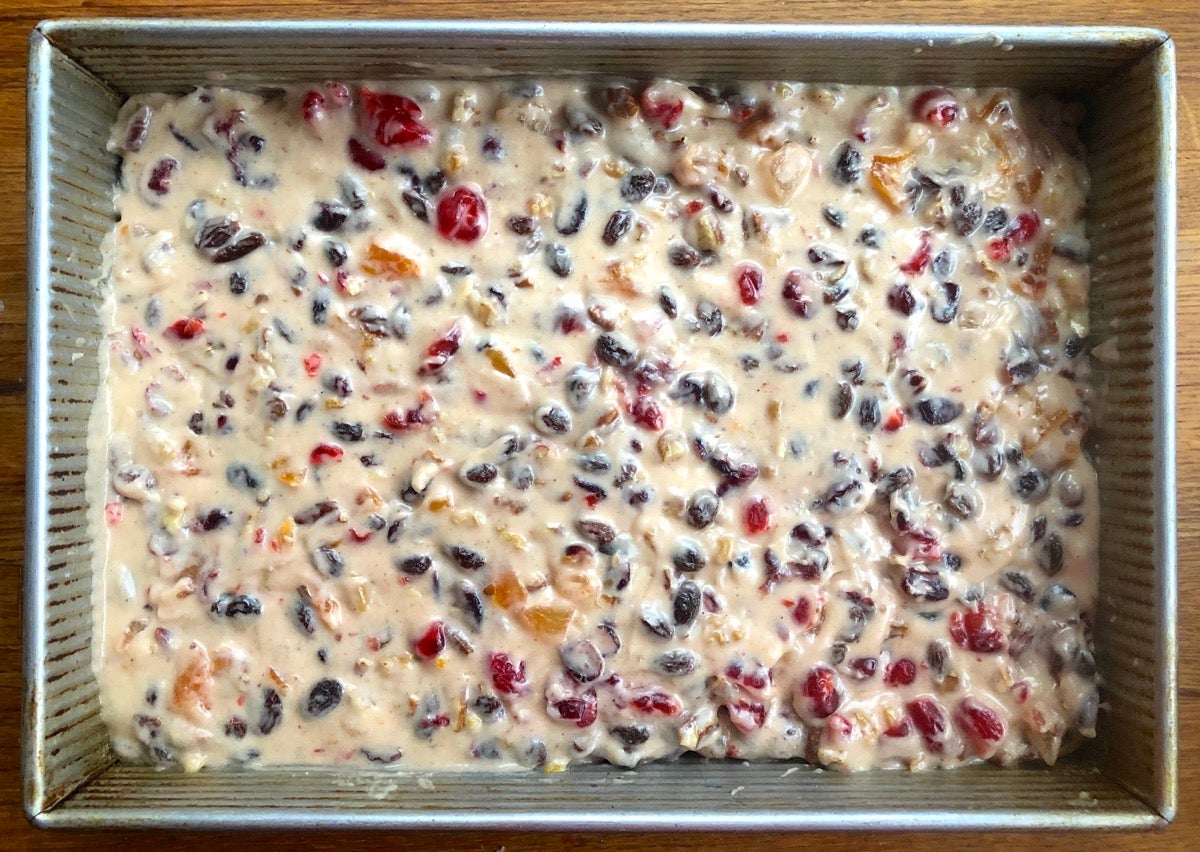
Once you’ve selected your recipe, make the batter and pour it into your chosen pan. Remember, use either a 9” x 13” or 9” x 9” pan for a typical half-batch of fruitcake.
Fruitcake can be rather plain-looking when baked in bar form, so I like to top it with candied cherries, coarse sugar, or nuts. Or all three!
Most bars (brownies and the like) bake at 350°F or 375°F. I like to bake fruitcake bars “low and slow,” to keep them nice and moist throughout.
So, bake thinner bars in a 300°F oven for 55 to 65 minutes, until a toothpick inserted into the center comes out clean. Thicker bars will need about 75 minutes in a 300°F oven. If you have a thermometer, the bars should register about 200°F to 205°F at the center.
It’s important not to overbake these bars; they should be dense and moist. They don’t need to brown (nor should they); browning is a sign they’ve baked too long.
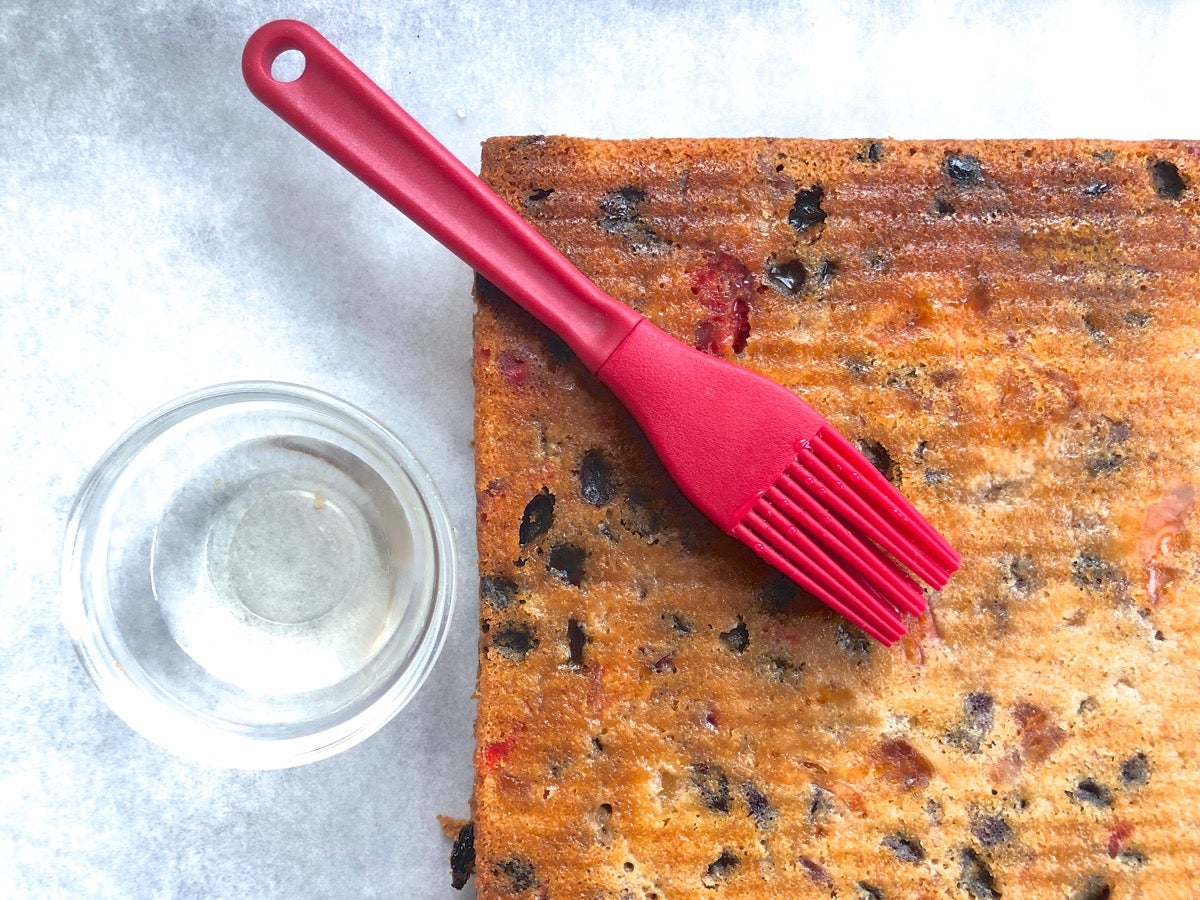
One reason people may not like fruitcake is its boozy flavor. While it’s traditional (and does help preserve the cakes for months, or even years), brushing cakes with brandy, bourbon, or the liqueur of your choice is entirely optional. Try one of the following instead:
Once the bars are baked, remove them from the oven, loosen their edges, wait 5 minutes, then carefully turn them over onto a rack or a piece of parchment. Poke their bottom surface all over with a toothpick or fork, and brush with the liquid of your choice.
A fruitcake bar hot from the oven will taste disappointingly dry and flat. But wait 24 hours and you’ll discover an amazing difference: those formerly nondescript bars have become chewy, nicely dense, and delicious. Wait 2 or 3 days, and they’re even better.
In fact, many people recommend “aging” fruitcake for weeks before serving it. I don’t go that far. While I appreciate fruitcake’s ability to “hang in there” for weeks on end, I also enjoy a “new” fruitcake — and that includes these bars. So, once your bars have cooled, cover and let them rest overnight before cutting.
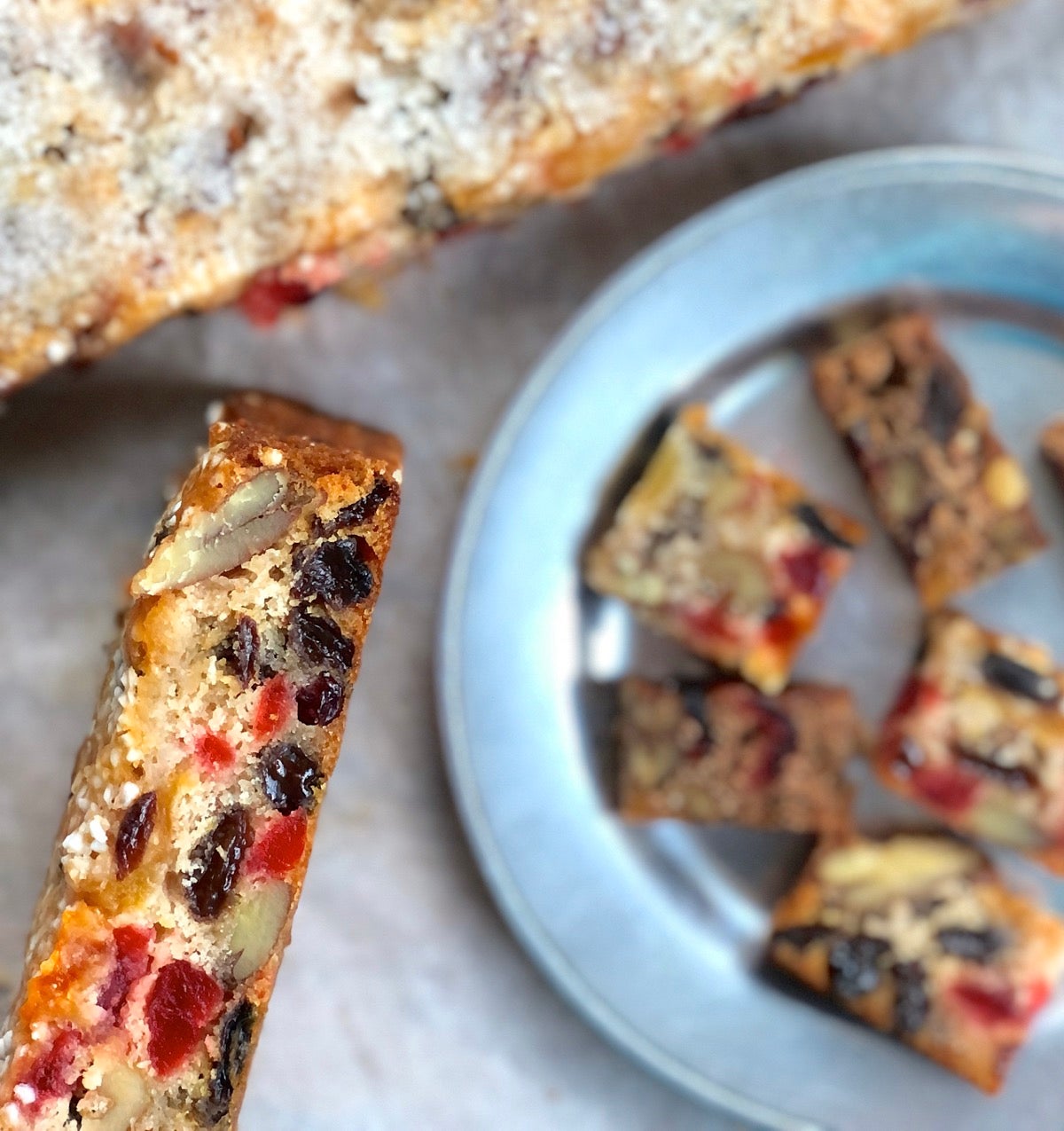
Ready to take the plunge and turn your favorite fruitcake recipe into bars? Here are some key points to remember:
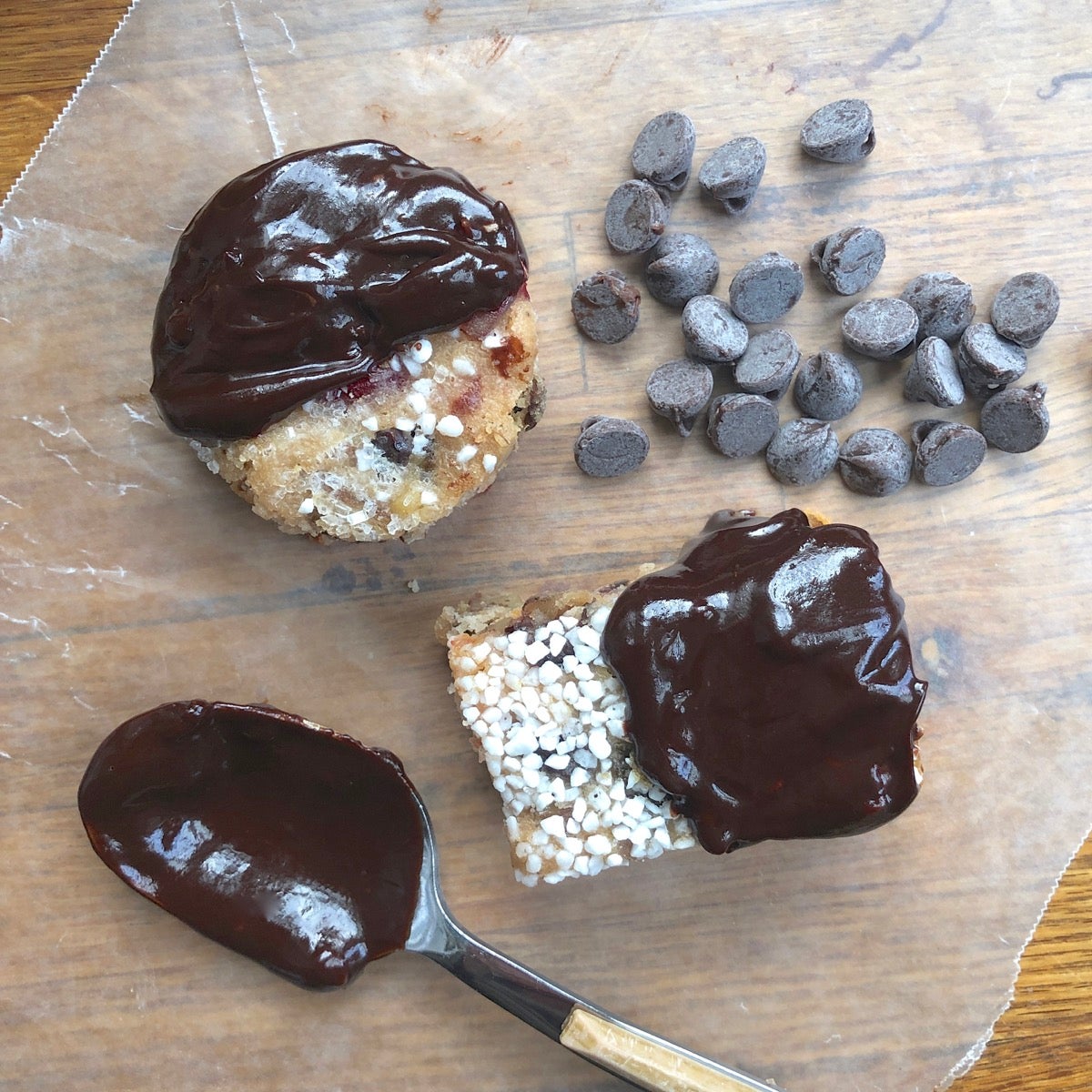
One final note: Since everything goes better with chocolate (right?), try coating your finished bars in the melted chocolate of your choice. I've just "iced" the bars pictured above in a simple chocolate ganache; for a more professional-looking finish, see our dipping chocolate tips.